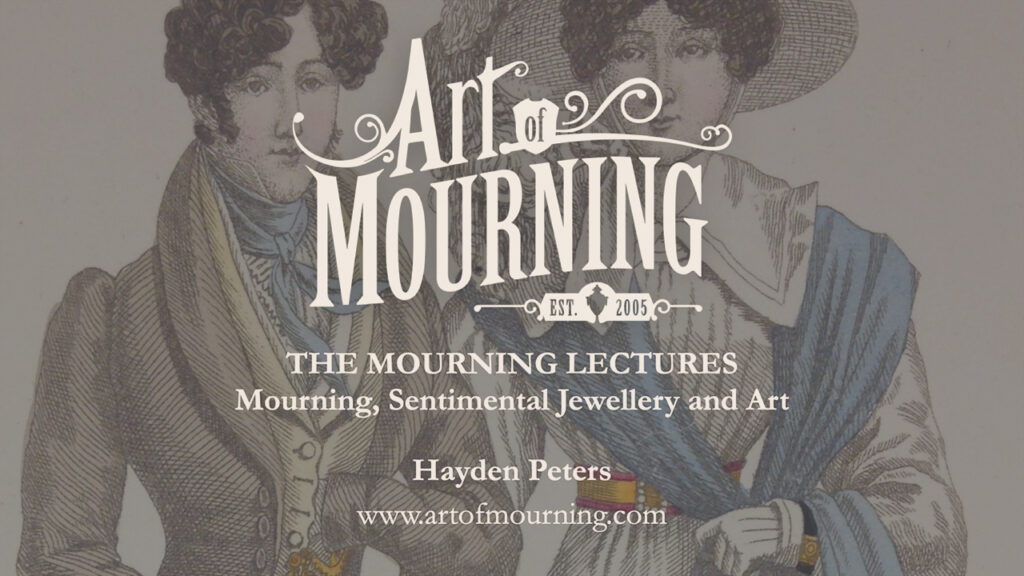Jewels for Princess Elizabeth Caroline, died 1759

Giving a gift of hair is an important factor in tokens of love and affection. An art that is not practiced today as it was in Western history, the gift of hair is a sacred and renewable practice, which goes beyond the measure of any gem or sentiment. Cataloguing the history of early modern hair and the practice of weaving hair into a jewel gives insights into the family and friendship paradigm of the 17th-20th centuries. Even when challenged with photography in the 1840-1900 period, hair was still a common element; popularised by monarchs who kept the custom popular and the industry that maintained such high demand for weaving hair.
Princess Elizabeth Caroline (1741-59) was the 2nd daughter Frederick, Prince of Wales and Princess Augusta, making her the granddaughter of Georgie II and sister to George III. As can be seen in the inscription in the reverse of this ring, the sentiment of “Hair of P’ss Elizabeth / sister of / George III” states clearly the intention of the sentiment of the ring. Eventually, the ring was bequeathed by Princess Sophia Matilda of Gloucester (1773 – 1844); an interesting element to its history, as the ring looks to be a later gift from the 19th century. Reasons for this later gift could range from the bequeathment appropriating the hair for a personal reason, or perhaps cultural, as the sentiment of the young Elizabeth’s life and royal standing are important within British history,
Familial collections, be they royal or not, are parts of living history, being primary resources in the narrative of a family and a society. When the proximity of the person who has dedicated the jewel is a physical part of themselves, it is easy to relate to the passion and inspiration that would have been part of the spirit of giving in the jewel.
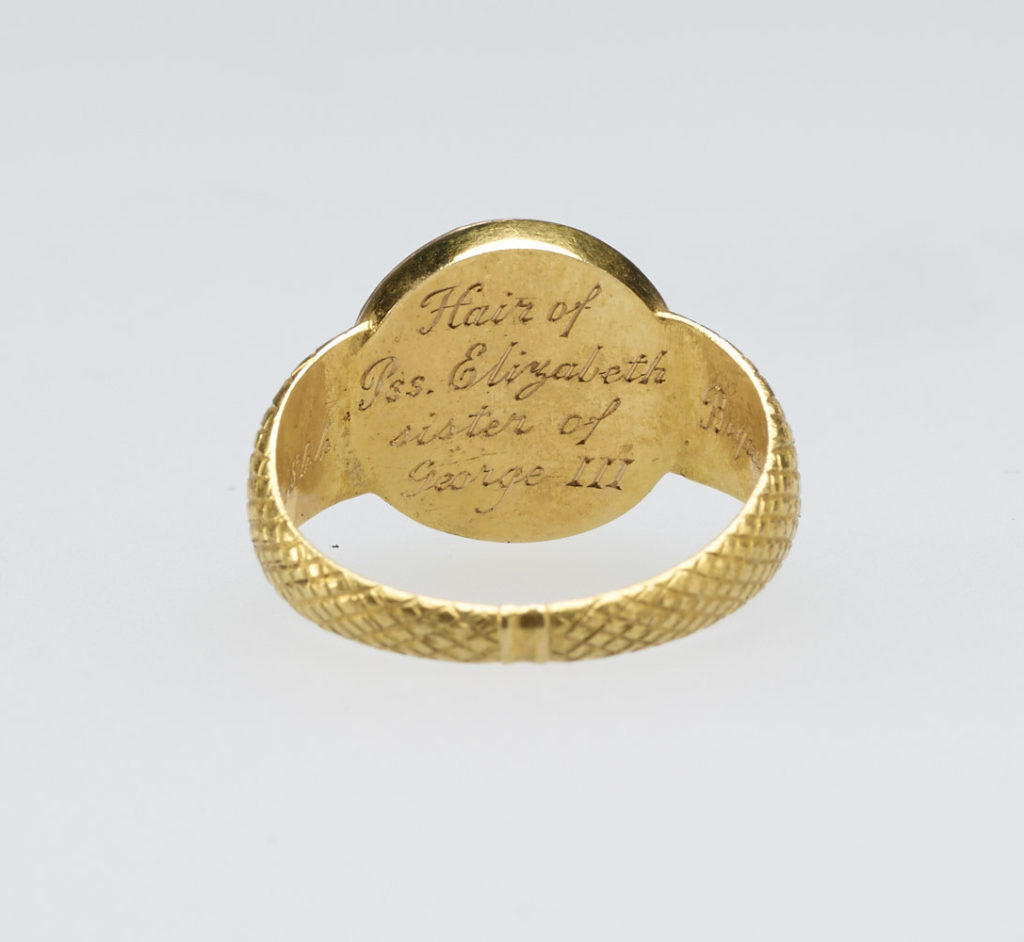
Elizabeth lived a short life, passing away at the age of 19. She suffered poor health throughout her life, with references from Horace Wapole stating that:
‘I saw her act in ‘Cato’ at eight years old, (when she could not stand alone, but was forced to lean against the side-scene,) better than any of her brothers and sisters. She had been so unhealthy, that at that age she had not been taught to read, but had learned the part of Lucia by hearing the others study their parts. She went to her father and mother, and begged she might act. They put her off as gently as they could – she desired leave to repeat her part, and when she did, it was with so much sense, that there was no denying her.’
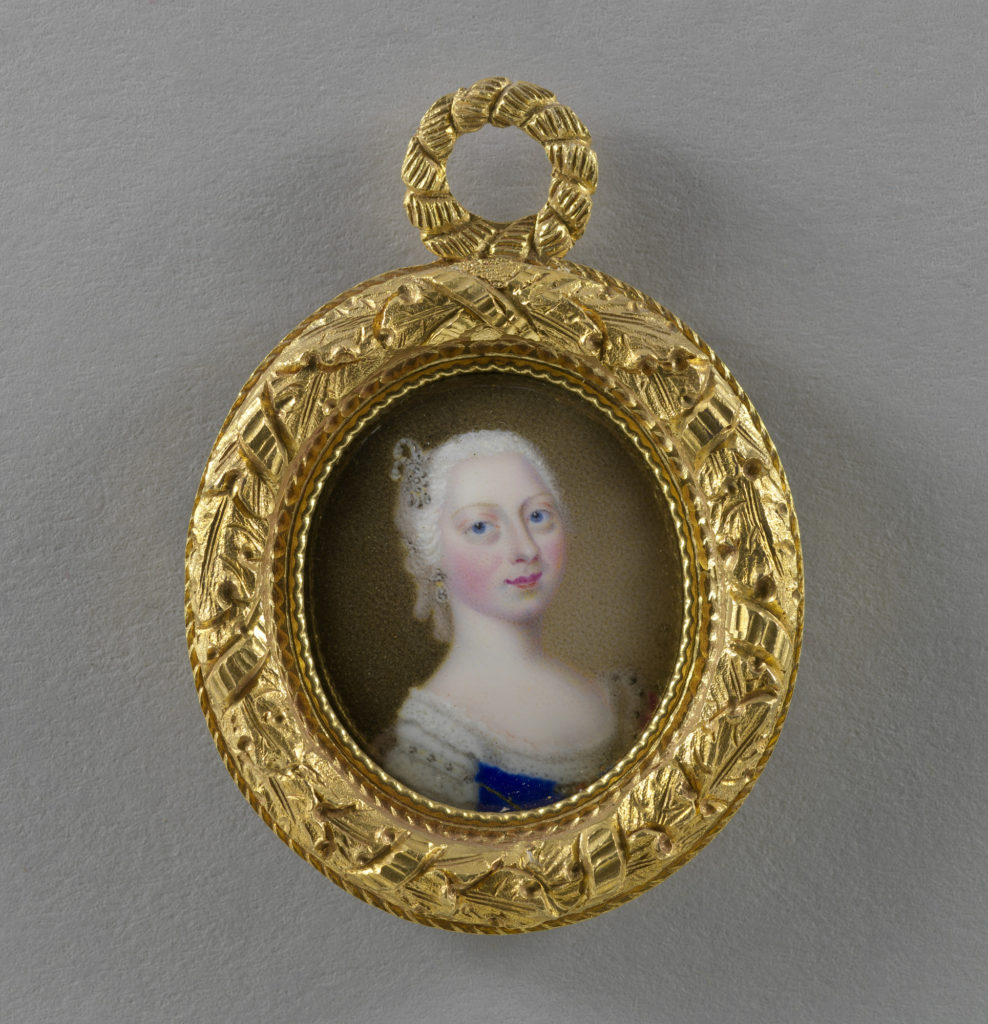
In the above portrait, Elizabeth is believed to be aged 18, making this close to the date of her passing. The art is attributed to Andreas Henry Groth, who was born in Germany and appointed Painter in Enamels in Ordinary to George II in 1741-2. The portrait is accompanied by a paper label that reads ‘Pss Elizabeth Caroline died 19’, which is also considered to be a later addition to the portrait. Groth was mentioned in Magnæ Britanniæ Notitia: Or, the Present State of Great-Britain; … By John Chamberlayne, however, he only entertained a short period as the appointed Painter of Enamels. As Walpole wrote about Groth that he was ‘a German, painted in watercolours and enamel, but made no great proficience’
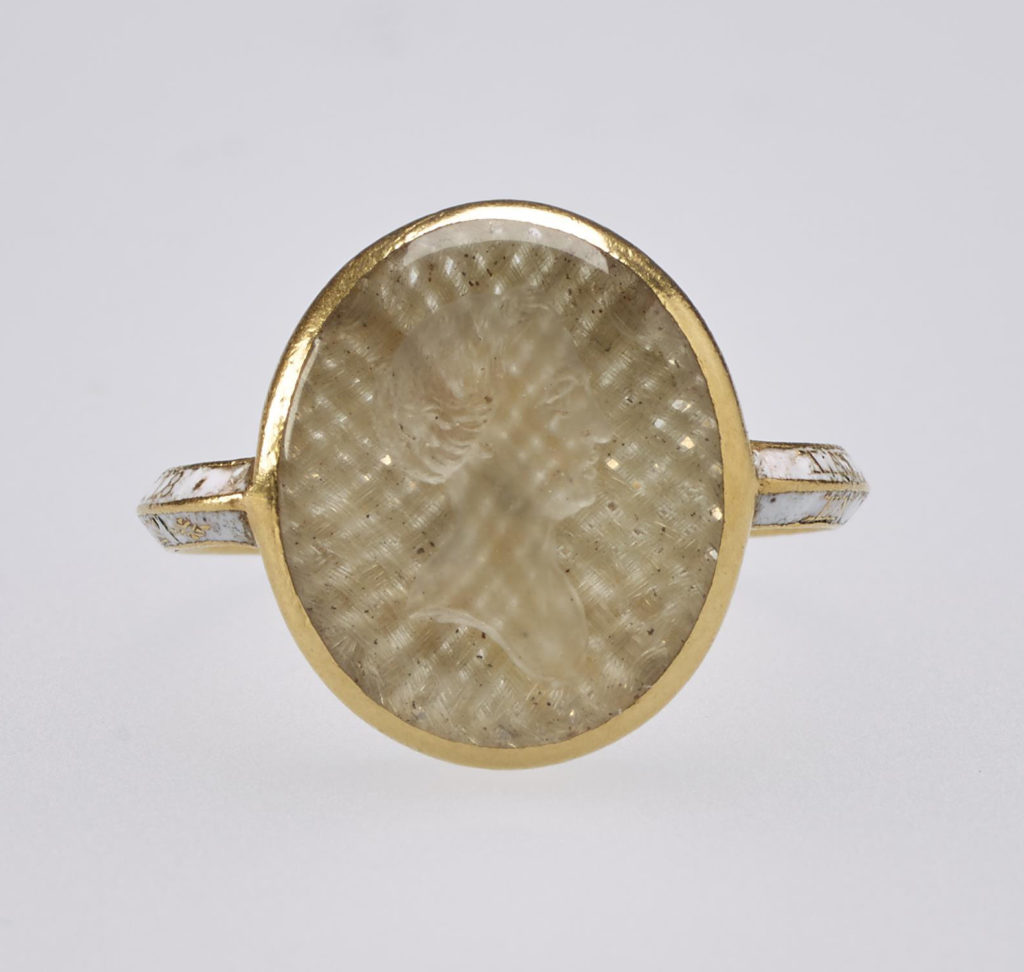
‘MEMOIRE D’UNE AMITIE CHERE’, or ‘the memory of a dear friendship’, captures the carved profile of Elizabeth in this intaglio mourning ring. This exists in the Royal Collection, but there’s no record of its provenance, however, with the element of ‘friendship’ and small size (1.5 x 2.0 x 2.0 cm) one can assume that whom it was given to was not far outside of the family sphere for Elizabeth herself.
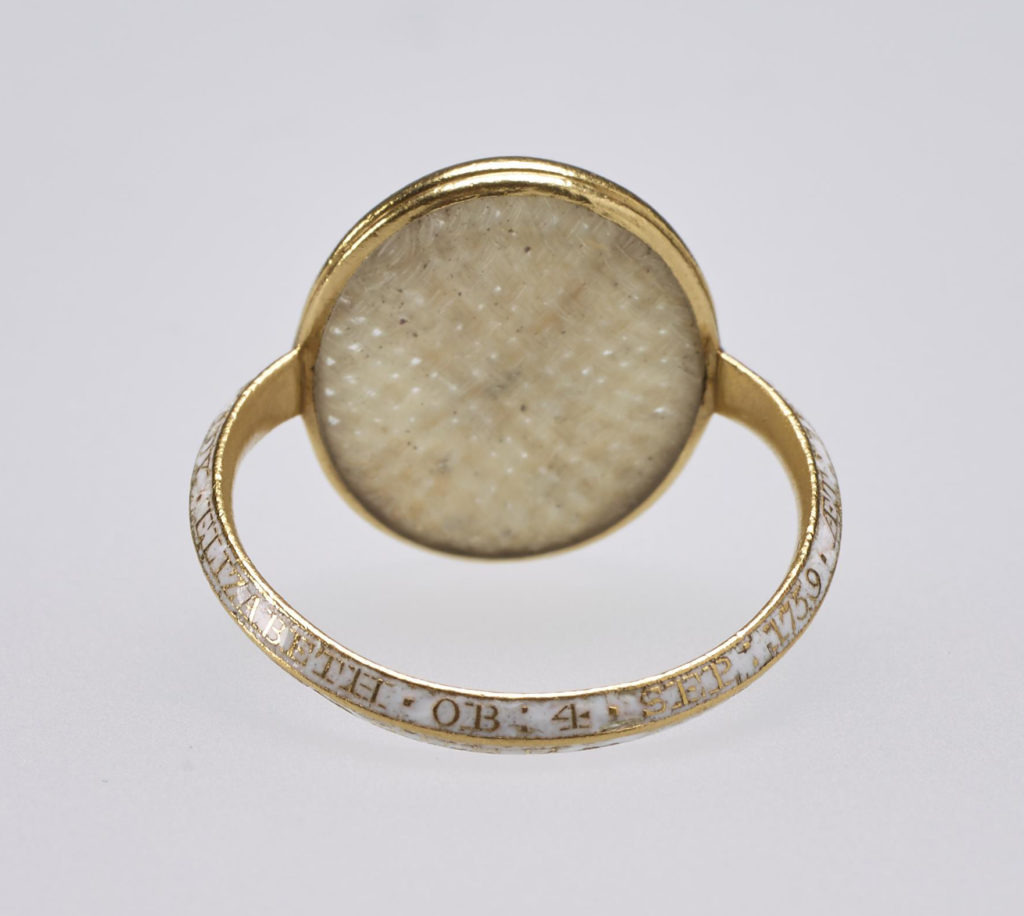
What is important to consider when seeing so many different artefacts dedicated to a single person is what was the culture of the time like to allow for such opulent jewels? The mid 18th century had seen wages start to increase and prices begin to fall. America prospered, with the population increasing to over 1.5 million and 25% of English exports in 1752 going to America. The Seven Years’ War (1754-1763) put Austria, France, Russia, Sweden and Saxony against England and Prussia. Colonial conflict abroad emerged from the superpowers of the French and English, while in Europe, Prussia settled in various states of Germany, creating a power of its own.
Global mobility, open markets and a hunger to globally colonise eventually led to the creation of the British Empire, creating a society that could have global representation through custom and fashion. These are the reasons why jewels that would be given to the status of love and grief are important to pollenate a world that could implant a society in a foreign land. Language, appearance and custom are all elements that are required for any form of control within a society and the British maintained their dominance through the unification of this.

Elizabeth, being the sister of George III, was a prominent and young figure of a family whose reach covered the globe. Public mourning for someone in this capacity would have been expected, as mandating periods of mourning can be seen in Louis Mercer details 18th century mourning practice in ‘Le deuil: son observation dans tous les temps et dans tous les pays, comparée à son observation de nos jours’ (1877), in which he also covers mourning in antiquity and other religions. It is in the 18th century that the following insights are found in this rough translation:
“…the Court of France in the eighteenth century, as the result of an order published in 1765 under the title: Ordre chronologique des Deuils de la Court, all usual ceremonial observed in these circumstances is thoroughly described in this book:
One was the great mourning for father mother, grandfather and grandmother, husband and wife, brother and sister. They called great mourning those shared in three stages: wool, silk and Small mourning. Other shared grief do only two stages, black and white. We never draped in recent bereavement, and, whenever things not draped, women could wear diamonds, and the sword men and ball money.
The mourning of father and mother was six months. During the first three months we wore wool poplin or flush Saint-Maur,… with tapered hanging cap,… sleeved white crepe… If it was in a dress, it wearing hats… sleeves and… crepe… After six weeks we left the cap… The last six weeks were small mourning. It was black or white with brocaded gauze and similar amenities. We could then wear diamonds. Etiquette of mourning for grandfathers and grandmothers was the same, but the grief was only four months… For siblings, wool for three weeks: fifteen days silk, eight days of Small mourning. For aunts and uncles, mourning was three weeks and could wear silk… Mourning for cousins lasted fifteen days… For uncles fashionable Britain, eleven days: six black, five white. To cousins from a sibling, a week, five days in black, three in white.
Grieving husbands was a year and six weeks. During the first six months, widows wore wool Saint-Maur, tail dress turned up by a strap attached to the petticoat side, and which is brought out by the pocket; the folds of the dress were arrested in front and behind; both front joined by staples or ribbons; pagoda sleeves; the coiffiire batiste with large cuffs; a flat sleeves rank and large hem… handkerchief… a black crepe belt, stapled in front to stop the size of folds, the two loose ends to the bottom of the dress; a scarf pleated crepe from behind; the large cap black crepe; gloves, shoes… the sleeve coated flush Saint-Maur, without trim… The six other months were black silk sleeves and trim pancake white and black stones, if you wanted.
During the last six weeks, black and plain white… the choice of the widow… diamonds could be worn”
This level of restriction was at the height of 18th century mourning custom and it was important to follow for a prosperous family. All these jewels and mementoes of Elizabeth reflect the high standard of mourning and sentimental custom that were imbued within society during the mid 18th century, as all tokens are of the highest quality for royalty, yet are prolific enough to show their importance within a grieving society.
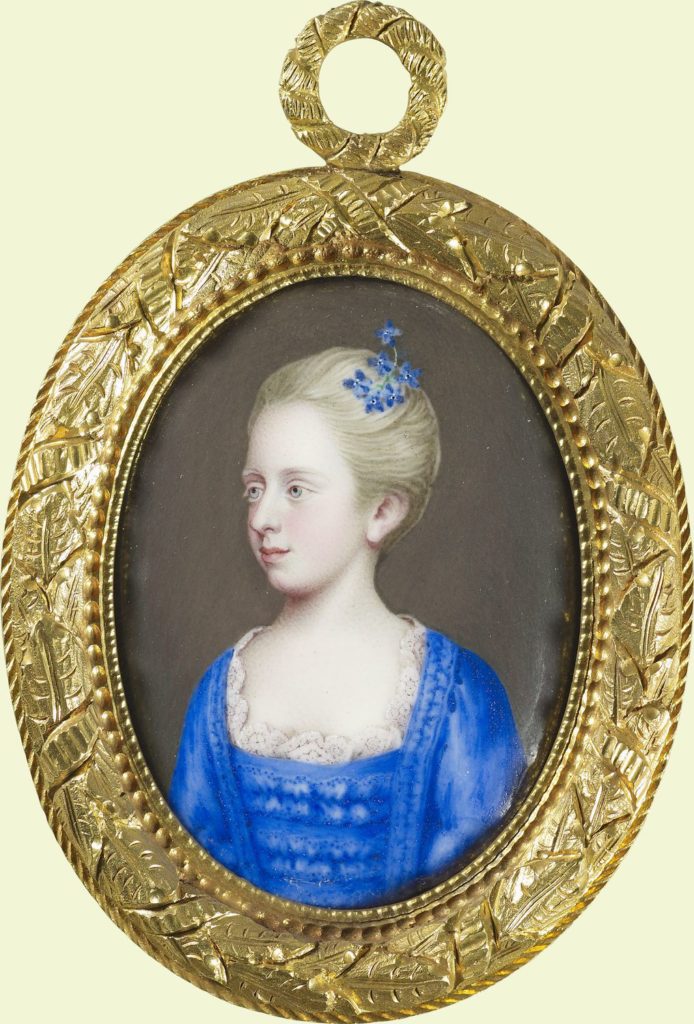
With an affluent society, restrictions around what was ‘proper’ to do in displaying sentimentality and grief publicly ensure that there is a commonality between people. Ritual drives commerce and demand for products go up, so the diversity of these objects becomes more competitive as they become a commodity. The love and care shown for Elizabeth also talks to the love that the family and the culture felt towards Elizabeth herself, with these existing as physical manifestations of memory.




